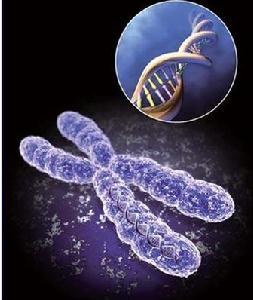Various causes of acute kidney injury in children (AKI) are likely to have long-term sequelae, leading to chronic kidney disease (CKD) occurs years later. Most children CKD cause is congenital, and complications of kidney disease caused by some non-secondary renal injury. Children CKD not lead to child morbidity and mortality, will lead to medical problems later in childhood. In fact, many child deaths from infectious diseases and renal involvement are closely related. For example, many children suffer from cholera or other infectious diarrhea is often not because of the death of the infection, but because of lack of capacity or shock AKI deaths. A large number of data indicate that adult hypertension, proteinuria and CKD in childhood has been in existence, and some even as early as in utero and perinatal existed.
2016 Objective World Kidney Disease Day is universal “Many adult kidney disease actually begins from childhood on” the idea. The event recognized the risk factors and childhood there, it is possible to identify high-risk and early intervention have CKD risk groups.
Despite the global epidemiological data on children CKD and AKI is constantly increasing, but there are still limited data. Children CKD prevalence rate is very low, and reported mixed results, about 15.0 to 74.7 per million people. There are different calculation methods of regional differences and cultural differences led to these results. The World Health Organization (WHO) recently joined the kidney and urinary system diseases worldwide death information tracking system. Although WHO does not specifically classified according to age, but it will soon become a valuable source of data, the United States and the European part of the registration system, kidneys and other data are included in a database of children ESRD data.
According to some specific adult population study, AKI may lead to CKD. As the incidence of AKI in ICU children are quite different from 8% to 89%, the prognosis is often dependent on medical resources can be obtained. While children account for only a small part of AKI and CKD CKD worldwide, but more and more data show that many adults of childhood kidney disease is left.
In short, the purpose of the establishment of the World Kidney Disease Day is to arouse the attention of all mankind to chronic kidney disease and improve the high incidence of chronic kidney disease, low awareness, prevention and treatment of low level of awareness. Early diagnosis and treatment of kidney disease is crucial that children need kidney disease caused by the public’s attention, in particular prevention, the country has an open two-child policy, prenatal and postnatal care need special attention. Your kidneys healthy? Please pay close attention. Check is simple: routine urinalysis, B ultrasound, blood tests can be screening. I wish you away from kidney disease!
[Health Tips: Brief Child Nephrology]
Unlike adult CKD, CKD is a major cause of children with congenital and hereditary abnormalities. So far, more than 150 have been found to regulate specific regulation of kidney development or pellets, tubules gene function. Most of the genetic abnormalities have manifested in childhood, many of which will lead to the progress of CKD.
Congenital renal and urinary tract malformations (CAKUT) is the cause of a child CKD categories, including renal agenesis, dysplasia, and urinary tract obstruction. Renal dysplasia One important classification is cystic kidney disease, renal tubular epithelial cells by a gene abnormalities lead to primary cilia. Podocytes in kidney capillaries outsourcing ball around a special type of cell, kidney disease because some children podocyte gene or acquired defects cause. There are also relatively rare but important cause of CKD children are hereditary metabolic disorders, such as hyperoxaluria and cystinosis, and atypical hemolytic uremic syndrome (HUS). This HUS thrombotic microangiopathy as a complement, clotting or metabolic pathways caused by abnormal genes.
In a different classification system, how to classify children who suffer from AKI but has recovered, and how children will occur or whether perinatal problems (renal units may be reduced) are classified are not yet clear. In children with end-stage renal disease (ESRD) cause, since the loss of nephron glomerular disease faster, the relative increase in glomerular disease and congenital disorders are relatively reduced. CAKUT some patients may develop lighter adult to ESRD, especially from 40 to 50 years of age.
Children kidney disease treatment strategies different from the treatment of adults with kidney disease, kidney disease in children with congenital and hereditary diseases based. Treatment of kidney disease in children has been relatively limited, only some autoimmune diseases have treatments to choose from. Kidney disease affects children’s growth and development of children can affect their later adult life, and most children in developing countries lack of medical resources, so as to build alliances and share their action, the urgent need for universal education-related personnel. Now widely recognized for suspicious prenatal ultrasound genitourinary system abnormal signs, there is a family history of kidney disease, growth disorders, a history of urinary tract infection, abnormal urination, children should be further examination of urine and abnormal appearance of the situation. Preliminary screening include targeted physical examination, urine dipstick, urinalysis and biochemical basis, if necessary further targeted assessment. Depending on the diagnosis, appropriate treatment may be required row. However, evidence about the treatment can delay the progression of CKD children remains limited. Diagnosis based on different, angiotensin converting enzyme inhibitors, angiotensin receptor blockers, antioxidants and dietary treatment may apply. However, diet therapy needed to meet the needs of growing children. Efforts need to focus on the direction of the reorganization is to expand cooperation and multidisciplinary focus by early diagnosis and treatment of children with kidney disease.



